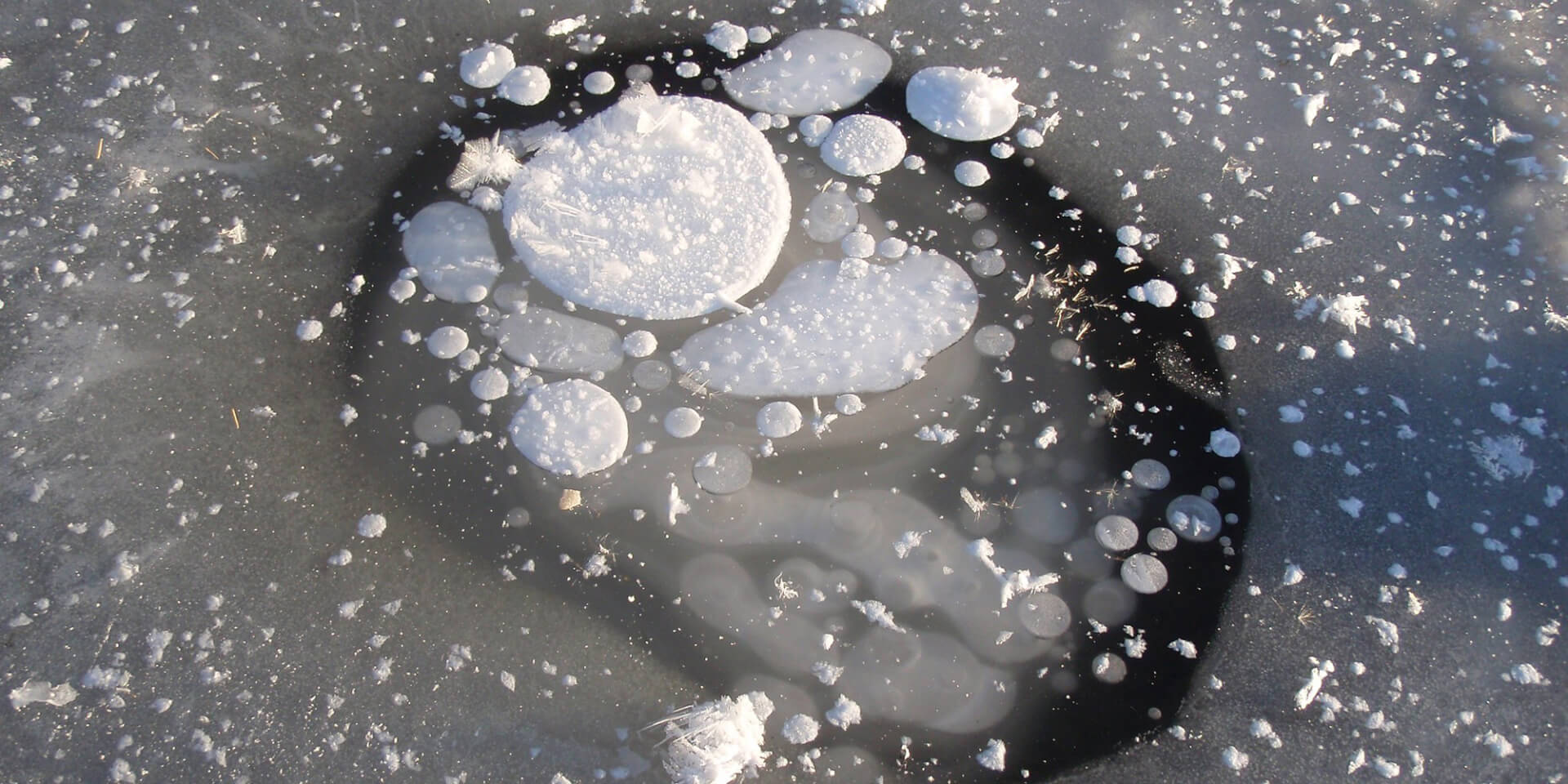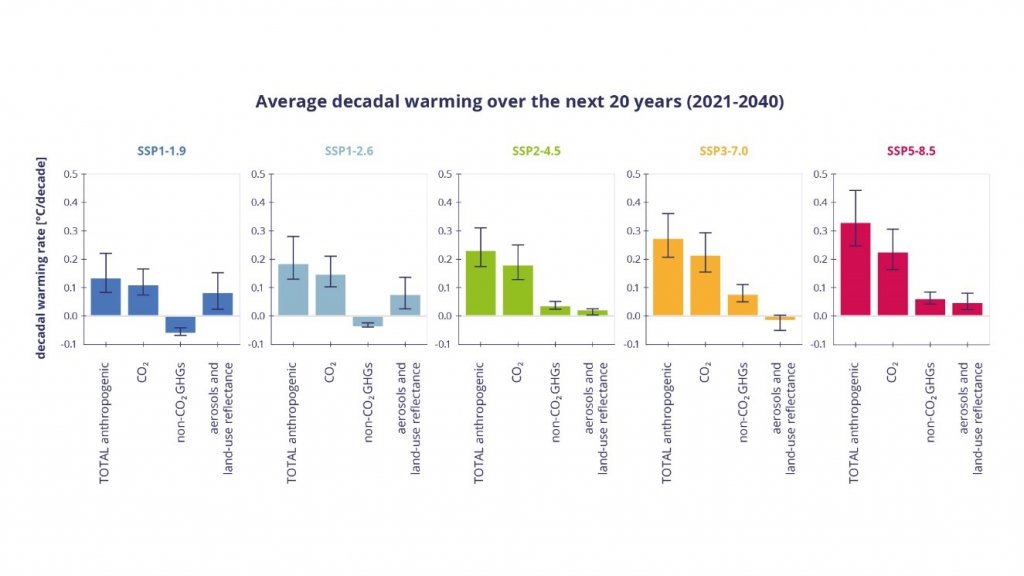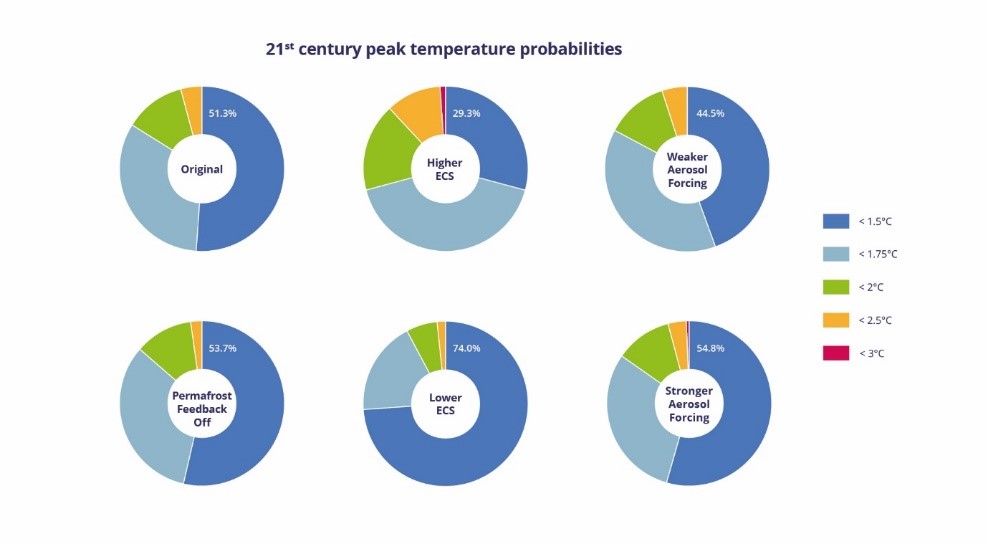
This article is part of the ISC’s Transform21 series, which features resources from our network of scientists and change-makers to help inform the urgent transformations needed to achieve climate and biodiversity goals.
As the world reflects on COP26, the messages from the summit are clear: to avoid the most dangerous climate change, we need to both cut greenhouse gas emissions now, and develop more ambitious climate plans before world leaders meet again for COP27 in Sharm El Sheikh next year. The importance of keeping warming below 1.5°C is reflected in the Glasgow Climate Pact, and now we need strong leadership from across society to hold governments to account in the run up to COP27.
What is less clear in all the coverage and analysis is the fact that, whilst global action is the most crucial factor, how the climate will change also depends on how exactly the climate system will respond to increasing greenhouse gases concentrations in the atmosphere, particularly over the coming decades.
In the new ZERO IN report by the CONSTRAIN project, we shine a light on these issues, unpicking some of the science behind the headlines and high-level statements coming out of COP26. We found that, even if we cut emissions hard and fast, temperatures could still rise more – or less – than our best estimates from climate models.
But this doesn’t mean that the climate models are giving us the wrong information, or that avoiding the most dangerous climate change will be harder than we thought. Instead, it means that we need to look at the full range of possibilities that the climate models tell us about, so that we can better understand our chances of staying below 1.5°C and work to minimise the climate risks.
In our report, we first look at how temperatures could change in the next two decades, depending on the decisions and actions taken post-COP26. We then show how, even with strong emissions cuts, our chances of global temperature rise staying below 1.5°C this century are still affected by how the climate system responds. This means that when it comes to climate change, we need to be prepared for a range of eventualities, rather than focusing on just one possible outcome.

The latest science suggests we will reach 1.5°C of global warming in the mid-2030s, and that temperatures will continue to rise until greenhouse gas emissions reach net zero.
But exactly how far, as well as how fast temperatures will rise, is down to the future emissions we generate. And the faster temperatures rise, the harder it will be for us to plan for and adapt to the climate impacts they bring.
Using simple climate models, we found that hard and fast emissions cuts in the next 20 years could slow down warming, cutting the contribution of CO2 to temperature rise by half compared to what we would see in a fossil-fuelled future. With climate impacts increasingly being felt across the world, strong emissions cuts could also give us more time and space to adapt.
COP26 also saw the Global Methane Pledge, which aims to reduce emissions of methane (CH4), a short-lived but potent greenhouse gas, by at least 30 percent by 2030. We found that cutting emissions of non-CO2 greenhouse gases including CH4 can play a key role in slowing down warming over the next two decades.
The figure below shows the average rate of warming per decade over the next 20 years (2021-2040) for five different emissions pathways, ranging from very low emissions (dark blue) to fossil-fuelled development (red). As well as the total amount of warming we can expect under each pathway, it breaks this down into contributions from CO2; non-CO2 greenhouse gases including CH4; aerosols; and energy reflected from the Earth’s surface.

The results highlight how stronger emissions cuts (SSP1-1.9, dark blue and SSP1-2.6, light blue) could bring down the rate of warming from CO2 as well as from non-CO2 greenhouse gases in the near future.
Even with deep and rapid emissions cuts, we can expect to reach 1.5°C warming in the mid-2030s. But behind that number lies a range of possibilities, including that temperature rise stays below 1.5°C.
Why a range? Our ability to model the climate system and make future projections is improving all the time, but given all its complexities, pinpointing exactly how the climate will respond to future emissions is simply not possible.
There are still questions around key processes that will affect our future climate, such as precisely how temperatures will respond to a long-term doubling of atmospheric CO2 concentrations (known as Equilibrium Climate Sensitivity or ECS), and the roles that aerosols (which reflect sunlight back into space among other things) and permafrost (which releases carbon as it thaws) will play.
We used a simple climate model to investigate how these processes could affect the maximum temperature change we can expect to see this century.
Sticking to an illustrative pathway that reflects strong emissions cuts that reach net zero by 2050, we found that changing the ECS by 10% could cause an 8% difference in peak temperatures. Changing how strongly aerosols and permafrost affect the climate system had a less noticeable effect on future temperatures, but when it comes to climate change, every bit of warming matters and can still lead to significant impacts.
How these climate system processes manifest in reality could also affect our chances of staying below 1.5°C, even if we stick to that same strong emissions reduction pathway.
Our “climate wheels”, based on the results from the simple climate model, show how the chances of temperatures staying below 1.5°C change if we adjust ECS, aerosol and permafrost effects in the same way as for the peak temperature experiment.

We found that while the original model set up gives us a 51% chance of staying below 1.5°C, increasing ECS by 10% (so temperatures respond more strongly to rising atmospheric CO2 concentrations) means this chance falls to 29%, while reducing ECS by 10% increases this chance to 74%. Changing the aerosol and permafrost properties have less of an effect, but still alter our chances of staying below 1.5°C.
None of this means that it will be harder (or easier) to stay within 1.5°C than we thought – instead, it shows that, alongside different choices we make as a global society, and the emissions pathways they lead to, complex climate processes could also lead us to different climate futures.
Ultimately, it means that instead of focusing on a single temperature projection, we need to prepare for a range of eventualities and the climate impacts they might bring. The more we are aware of these eventualities, the better we can plan for what lies ahead.
ZERO IN ON: Near-term warming and our chances of staying within 1.5°C. The CONSTRAIN Project Annual Report 2021, DOI:10.5281/zenodo.5552389
CONSTRAIN Briefing Note: What exactly is a 1.5°C pathway?

Debbie Rosen
Dr Debbie Rosen is the Science and Policy Manager for the EU Horizon 2020 CONSTRAIN project, based at the University of Leeds, UK. Debbie Rosen manages the overall coordination of the project’s scientific output, and supports the PI and wider CONSTRAIN consortium in identifying and delivering opportunities to promote CONSTRAIN’s work with external partners and stakeholders.
Header photo: Frozen methane bubbles (Miriam Jones, USGS via Flickr).